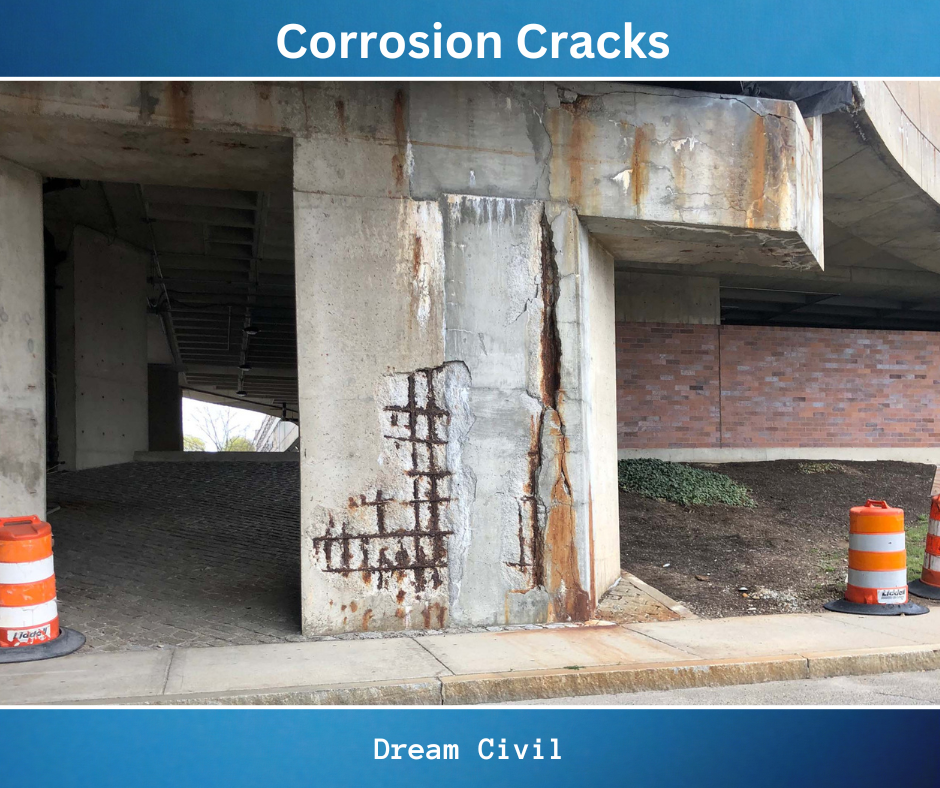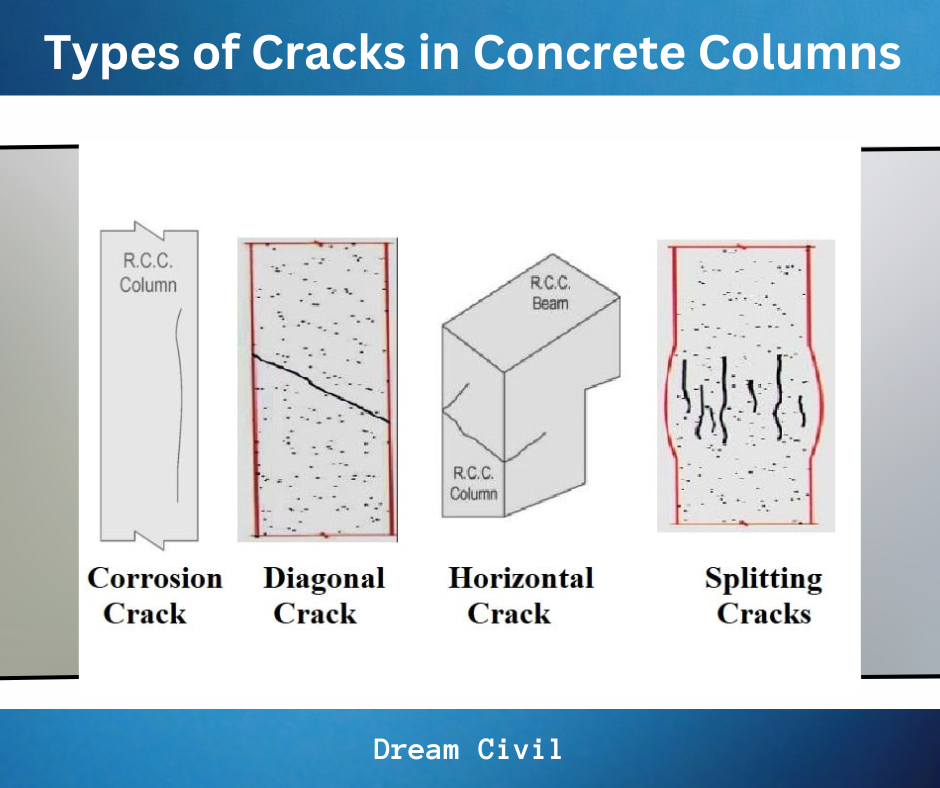Table of Contents
In this article, we will discuss the types of cracks in concrete columns.
| Columns are defined as long slender members loaded axially in compression and having lateral dimensions very small as compared to their lengths. |
A vertical compression member is called a column. If the load passes through the longitudinal axis coinciding with the CG of the column, it is called the axially loaded column, or otherwise eccentrically loaded column.
Columns are the building structures connected to different footings to transfer the load of the building to the footings of the buildings.
A. Types of Cracks in Concrete Columns
1. Diagonal Cracks
Diagonal cracks in reinforced concrete columns evolve and encompass the whole face of the column anywhere along its height.
The primary cause of diagonal cracks in concrete columns is the insufficient load-carrying capacity of the columns; inadequate cross-section and insufficient reinforcement steel. Diagonal Cracks would affect structural soundness and hence requires to be dealt with appropriately.

2. Horizontal Cracks
Horizontal crack in the reinforced concrete column is followed to start mostly at the beam-column junction, and on the column face where tensile stress is huge.
Columns with satisfactory moment resistance capacity, inadequate reinforcements, or disposition of installed reinforcement are vulnerable to horizontal cracking; due to the effect of shear force and direct load, and uniaxial bending.
Finally, horizontal cracks substantially decrease the shear strength of the column guiding to a greatly increased risk of failure. So, it is needed to be tackled as soon as possible.

3. Splitting Cracks
Splitting cracks into reinforced concrete columns are short parallel vertical cracks with non-uniform width. Columns with insufficient steel reinforcement and low concrete quality are susceptible to encountering such types of cracks.
Splitting cracks into concrete columns originated as a result of reaching their maximum load-carrying capacity.
The maximum load bearing capacity of the column is reached when the concrete cross section is insufficient or reinforcement ratio is inadequate or a combination thereof.

4. Corrosion Cracks
The corrosion cracks in concrete columns are formed along the path of reinforcements. This type of crack is normally uniform in width and widens as the column ages.
Possible reinforcement corrosion and inadequate bond between concrete and steel bars are the cause of corrosion reinforcement in concrete columns.
If such type of cracks is not taken care the corrosion of reinforcement would increase greatly.

Read Also: Precast Walls

